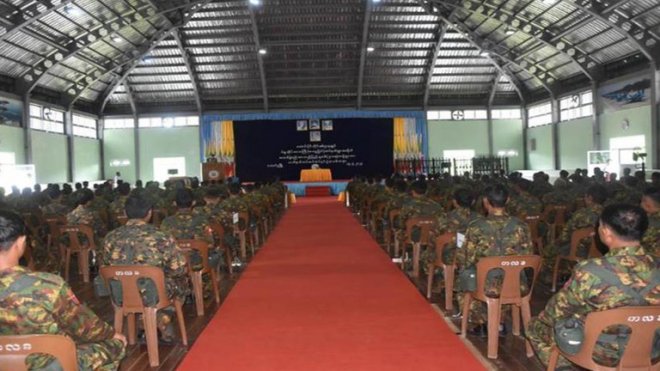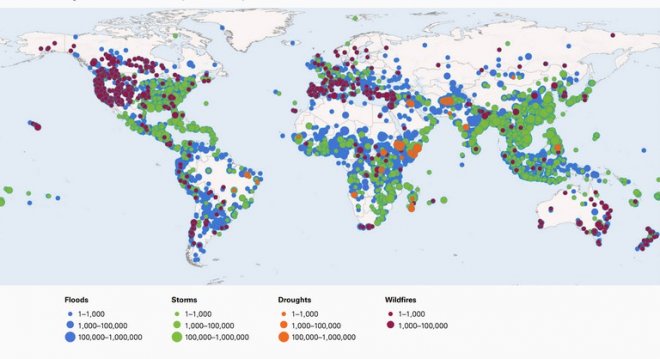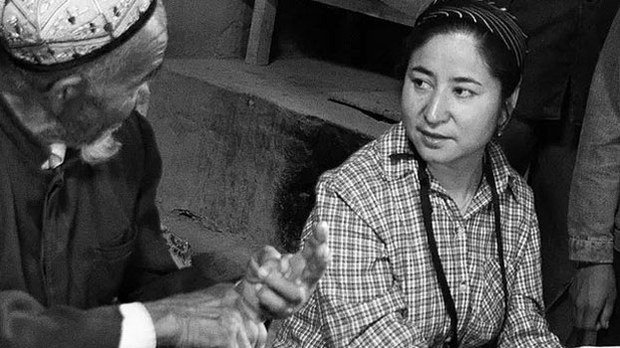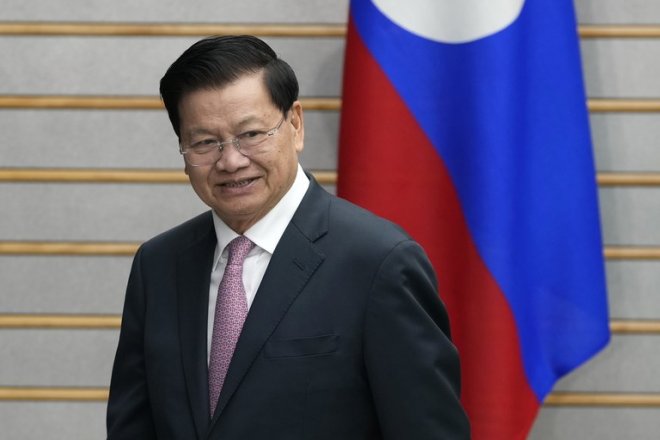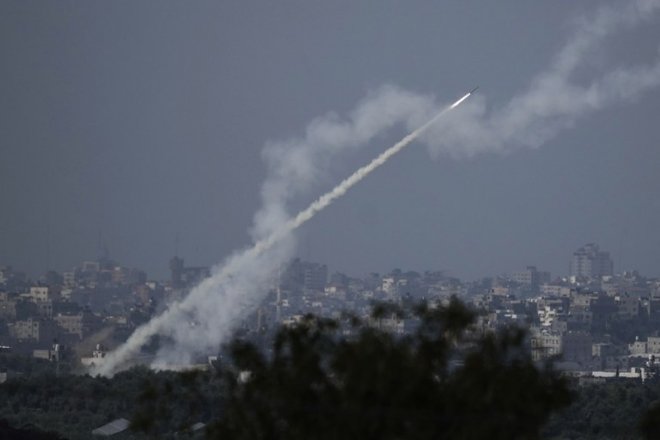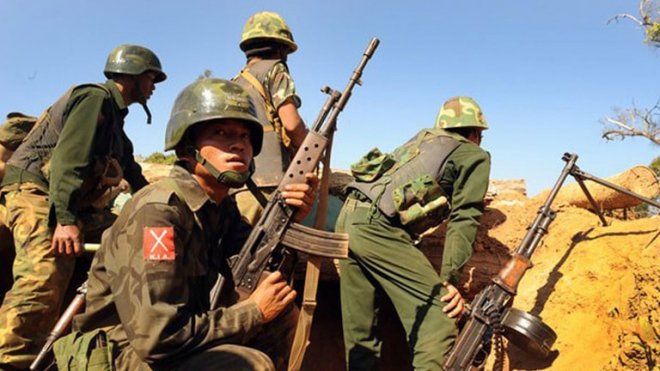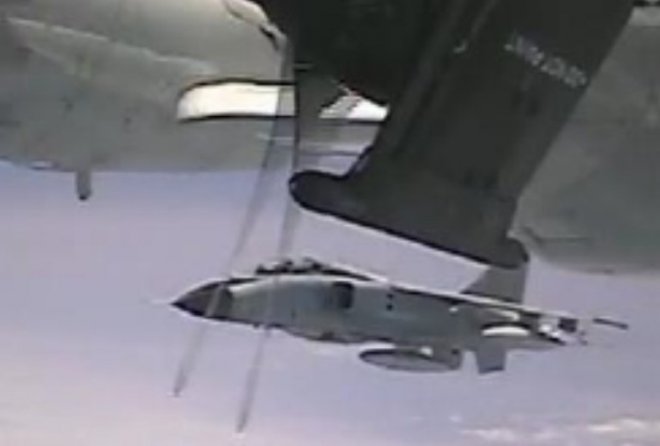Imported white horses burnish Kim’s image and tie him to Korea’s mythical past
The image of Kim Jong Un ascending the snowy peaks of Mt. Paektu atop a majestic white stallion is meant to stir patriotism among North Koreans and solidify his place in the three-generation Kim dynasty alongside his father and grandfather.
For such propaganda purposes – and for horseback riding around Kim’s vacation villas – North Korea imports horses from Russia, and last year brought in 51 Orlov Trotters, according to Russian media outlet RIA Novosti, the largest number since 61 were imported in 2015.
In early 2020, North Korean authorities purchased two such horses for US$23,400 according to a Moscow Times report, meaning each horse costs the regime almost $12,000 – a huge expense for a country facing food shortages.
“The residents are getting hungrier and hungrier,” Jihyun Park, a North Korean escapee who now lives in the United Kingdom, told RFA’s Korean Service. “On top of making nuclear weapons and missiles, the North Korean authorities buy expensive horses. This is really infuriating.”
And while some might consider the horses luxury items exported in violation of U.N. Security Council sanctions on the country over its nuclear program, that’s not necessarily the case, Eric Penton-Voak, coordinator for the U.N. Security Council’s Panel of Experts told RFA.
That’s because the definition of “luxury goods” is up to the interpretation of individual U.N. member states, he said. “As horses are not mentioned specifically in the sanctions regarding luxuries, it is not possible for the panel to impose an alternative interpretation on any member state.”
![]() North Korean leader Kim Jong Un (center) rides a horse as he visits battle sites in areas around Mount Paektu, North Korea. Credit: KCNA via Reuters file photoBut Troy Stangarone, senior director and fellow at the Korea Economic Institute, said that the horses are clearly luxury items – although Russia would likely not allow them to be added to the list of prohibited luxury goods.
North Korean leader Kim Jong Un (center) rides a horse as he visits battle sites in areas around Mount Paektu, North Korea. Credit: KCNA via Reuters file photoBut Troy Stangarone, senior director and fellow at the Korea Economic Institute, said that the horses are clearly luxury items – although Russia would likely not allow them to be added to the list of prohibited luxury goods.
“If there is a push for additional restrictions on North Korea, either in response on a 7th nuclear test or continued ballistic missile tests, I would expect there to be a focus on North Korea’s newer revenue generating items such as tungsten and molybdenum, rather adding [horses] to the list of prohibited luxury good items,” he said. The two elements are valued for their metallurgic applications.
Symbol of Power
The white horse has been closely associated with the Kim dynasty, often called the Paektu bloodline after the Korean Peninsula’s tallest mountain, considered sacred in Korean culture and mythology.
White horses have been used in North Korean propaganda since the days of the country’s founding more than 70 years ago. National founder Kim Il Sung is said to have ridden a white horse while he was leading Korean guerillas against Japanese colonizers before and during World War II.
Imagery of Kim Jong Un riding on horseback has been prevalent in state media propaganda in recent years, likely to connect him with his grandfather. Footage from a 2021 state-media documentary, hosted on the "푸웅Phuong DPRK Daily" YouTube account, shows several scenes of Kim riding a white horse, including in a full sprint.
The horse also serves to connect the dynastic family to the chollima, the winged horse of Korean and East Asian folklore capable of traveling 1,000 ri (about 244 miles) in a single day, Jonathan Corrado, Policy Director at The Korea Society,” a New York-based nonprofit that promotes mutual understanding between Korea and the United States.
“The chollima myth is used on North Korean stamps, money, websites, propaganda, and slogans, often appearing in conjunction with the concept of juche, or self-reliance,” said Corrado.
“North Korea’s propaganda often shows Kim Jong Un climbing Mt. Paektu on a white horse, or riding his horse with snowy mountains in the background,” said Lee Hyun Seung, a former member of the North Korean elite who escaped and is now a research fellow at the Maryland-based Global Peace Foundation, which is aimed at peacebuilding.
Beyond the propaganda, the horses are likely sent to Kim Jong Un’s various vacation villas for the first family’s enjoyment, Lee said.
“There are equestrian centers in their villas in Wonsan [in Kangwon province], Changsong in North Pyongan province and Kangdong in Pyongyang,” he said. “The horses are probably located there and Kim Jong Un’s family can enjoy horseback riding as a hobby whenever they visit.“
Translated by Claire Shinyoung Oh Lee and Leejin J. Chung. Edited by Eugene Whong and Malcolm Foster.
[圖擷取自網路,如有疑問請私訊]
For such propaganda purposes – and for horseback riding around Kim’s vacation villas – North Korea imports horses from Russia, and last year brought in 51 Orlov Trotters, according to Russian media outlet RIA Novosti, the largest number since 61 were imported in 2015.
In early 2020, North Korean authorities purchased two such horses for US$23,400 according to a Moscow Times report, meaning each horse costs the regime almost $12,000 – a huge expense for a country facing food shortages.
“The residents are getting hungrier and hungrier,” Jihyun Park, a North Korean escapee who now lives in the United Kingdom, told RFA’s Korean Service. “On top of making nuclear weapons and missiles, the North Korean authorities buy expensive horses. This is really infuriating.”
And while some might consider the horses luxury items exported in violation of U.N. Security Council sanctions on the country over its nuclear program, that’s not necessarily the case, Eric Penton-Voak, coordinator for the U.N. Security Council’s Panel of Experts told RFA.
That’s because the definition of “luxury goods” is up to the interpretation of individual U.N. member states, he said. “As horses are not mentioned specifically in the sanctions regarding luxuries, it is not possible for the panel to impose an alternative interpretation on any member state.”
 North Korean leader Kim Jong Un (center) rides a horse as he visits battle sites in areas around Mount Paektu, North Korea. Credit: KCNA via Reuters file photoBut Troy Stangarone, senior director and fellow at the Korea Economic Institute, said that the horses are clearly luxury items – although Russia would likely not allow them to be added to the list of prohibited luxury goods.
North Korean leader Kim Jong Un (center) rides a horse as he visits battle sites in areas around Mount Paektu, North Korea. Credit: KCNA via Reuters file photoBut Troy Stangarone, senior director and fellow at the Korea Economic Institute, said that the horses are clearly luxury items – although Russia would likely not allow them to be added to the list of prohibited luxury goods.“If there is a push for additional restrictions on North Korea, either in response on a 7th nuclear test or continued ballistic missile tests, I would expect there to be a focus on North Korea’s newer revenue generating items such as tungsten and molybdenum, rather adding [horses] to the list of prohibited luxury good items,” he said. The two elements are valued for their metallurgic applications.
Symbol of Power
The white horse has been closely associated with the Kim dynasty, often called the Paektu bloodline after the Korean Peninsula’s tallest mountain, considered sacred in Korean culture and mythology.
White horses have been used in North Korean propaganda since the days of the country’s founding more than 70 years ago. National founder Kim Il Sung is said to have ridden a white horse while he was leading Korean guerillas against Japanese colonizers before and during World War II.
Imagery of Kim Jong Un riding on horseback has been prevalent in state media propaganda in recent years, likely to connect him with his grandfather. Footage from a 2021 state-media documentary, hosted on the "푸웅Phuong DPRK Daily" YouTube account, shows several scenes of Kim riding a white horse, including in a full sprint.
The horse also serves to connect the dynastic family to the chollima, the winged horse of Korean and East Asian folklore capable of traveling 1,000 ri (about 244 miles) in a single day, Jonathan Corrado, Policy Director at The Korea Society,” a New York-based nonprofit that promotes mutual understanding between Korea and the United States.
“The chollima myth is used on North Korean stamps, money, websites, propaganda, and slogans, often appearing in conjunction with the concept of juche, or self-reliance,” said Corrado.
“North Korea’s propaganda often shows Kim Jong Un climbing Mt. Paektu on a white horse, or riding his horse with snowy mountains in the background,” said Lee Hyun Seung, a former member of the North Korean elite who escaped and is now a research fellow at the Maryland-based Global Peace Foundation, which is aimed at peacebuilding.
Beyond the propaganda, the horses are likely sent to Kim Jong Un’s various vacation villas for the first family’s enjoyment, Lee said.
“There are equestrian centers in their villas in Wonsan [in Kangwon province], Changsong in North Pyongan province and Kangdong in Pyongyang,” he said. “The horses are probably located there and Kim Jong Un’s family can enjoy horseback riding as a hobby whenever they visit.“
Translated by Claire Shinyoung Oh Lee and Leejin J. Chung. Edited by Eugene Whong and Malcolm Foster.
[圖擷取自網路,如有疑問請私訊]
|
本篇 |
不想錯過? 請追蹤FB專頁! |
| 喜歡這篇嗎?快分享吧! |
相關文章
AsianNewsCast











